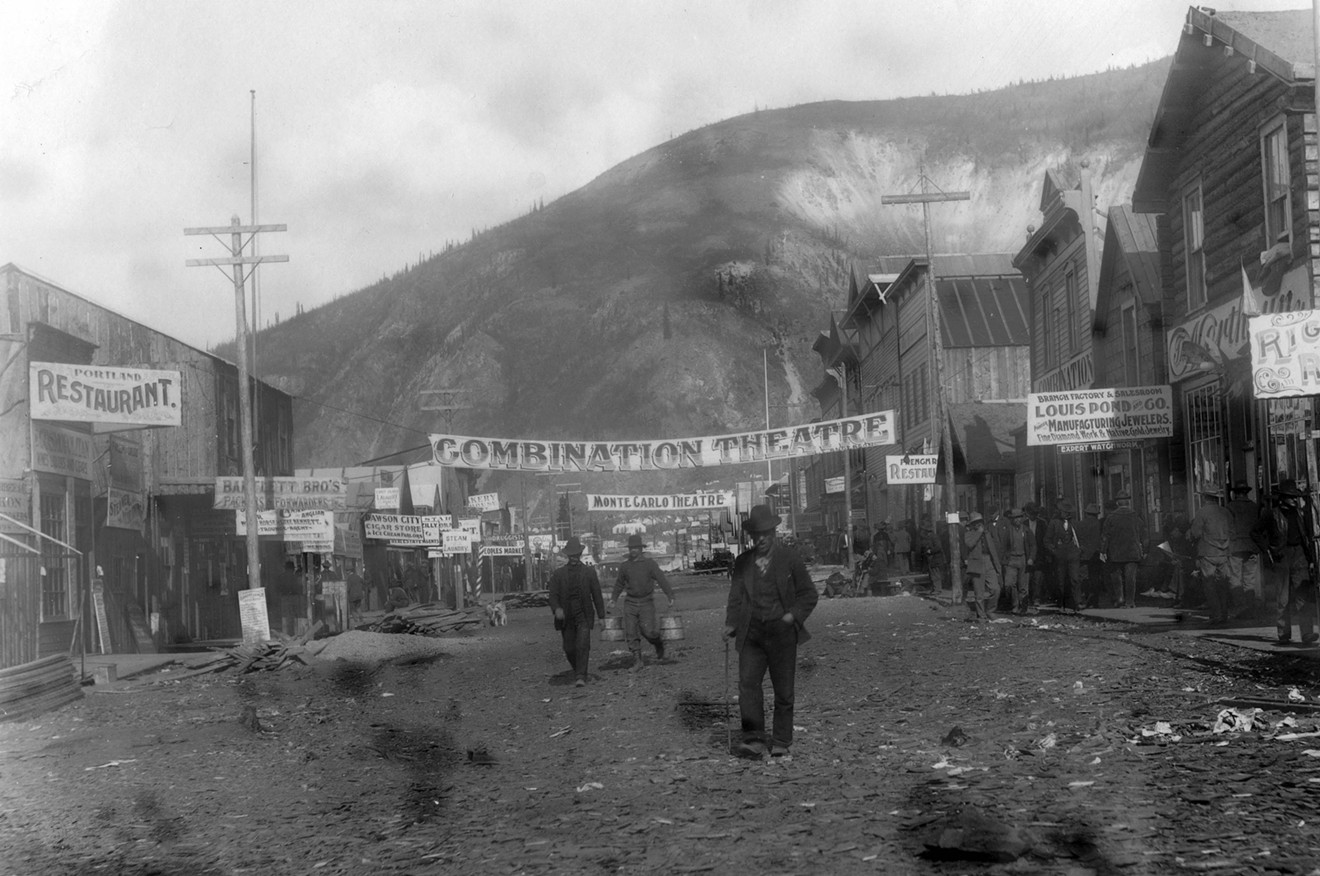It’s a sign of hope that Bill Morrison, arcane found-footage wizard and poet of nitrate decay, is nearly a household name, with his films routinely feted at the New York Film Festival, showcased in the Venice Biennial and, most brazenly of all, released onto actual movie screens. Using only archival materials, Morrison has cornered the market on a simple idea: how film reflects memory’s unreliability and time’s inexorable destruction.
The Morrison method began as a poetic pivot — his early films, including his breakout montage, Decasia (2002), and his Frankenstein adaptation, Spark of Being (2010), used the viscous chaos of actual nitrate dissolution to create a sense of lyrical menace and mourning. But with his past few features, Morrison has moved away from that and become more genuinely interested in history itself. Hence, his new Dawson City: Frozen Time might be the Bill Morrison movie for viewers with little patience for Bill Morrison movies — it could serve, maybe with a little celebrity narration, as a History Channel special. I miss the weird, metaphoric entropy, which Morrison would always score but not narrate, but watching this forgotten history happen is cool, too.
We start with a simple explanation of cellulose nitrate’s first use — as an explosive — and how the stock’s ridiculously fiery temperament has in its way shaped film history. Nitrate served as the art form’s suicidal imp, immolating one warehouse and theater after another and almost ensuring that film as film would never survive its own instability. The story moves to a massive cache of early 20th-century films uncovered in the 1970s in Dawson City, Canada, which allows Morrison to launch into a leisurely portrait of the Yukon Gold Rush, Dawson City’s origins and growth (where, among a great many others, Fredick Trump began his fortune, with a brothel), the industrialization of mining, World War I, the interwar combat between labor and government, and so on.
Unusually for Morrison, the tack is classic documentary, including TV footage of Morrison himself, news images of the ’70s excavation, archival photos, interviews, copious explanatory titles, and film clips used as punctuation. The Dawson City footage — more than 370 films, some shot in the Yukon, some simply shipped in for the entertainment of the shifting hordes of claim-stakers — zips by in bullet-like blips, and a lot of it isn’t even decayed. We see what Dawsonites saw, on the frozen edge of a frontier: local prospector dramas as well as imported travelogues, serials, melodramas, newsreels and nature studies. In all cases, the Dawson City prints are the only copies of these films to have survived.
It’s an orgy for film geeks and history jonesers, to be sure, and the revelation of how exactly the prints got waylaid and then buried in the permafrost, saved by virtue of Dawson City’s fading away in the 20th century, proves a sweet narrative reward. There’s no doubt that, after two full hours of this immersion, you feel like you’ve been somewhere — if not the Yukon, then a deep past we all thought was gone.
[
{
"name": "Air - MediumRectangle - Inline Content - Mobile Display Size",
"component": "19274298",
"insertPoint": "2",
"requiredCountToDisplay": "2"
},{
"name": "Editor Picks",
"component": "17482312",
"insertPoint": "4",
"requiredCountToDisplay": "1"
},{
"name": "Inline Links",
"component": "18711090",
"insertPoint": "8th",
"startingPoint": 8,
"requiredCountToDisplay": "7",
"maxInsertions": 25
},{
"name": "Air - MediumRectangle - Combo - Inline Content",
"component": "17482310",
"insertPoint": "8th",
"startingPoint": 8,
"requiredCountToDisplay": "7",
"maxInsertions": 25
},{
"name": "Inline Links",
"component": "18711090",
"insertPoint": "8th",
"startingPoint": 12,
"requiredCountToDisplay": "11",
"maxInsertions": 25
},{
"name": "Air - Leaderboard Tower - Combo - Inline Content",
"component": "17482313",
"insertPoint": "8th",
"startingPoint": 12,
"requiredCountToDisplay": "11",
"maxInsertions": 25
}
]











